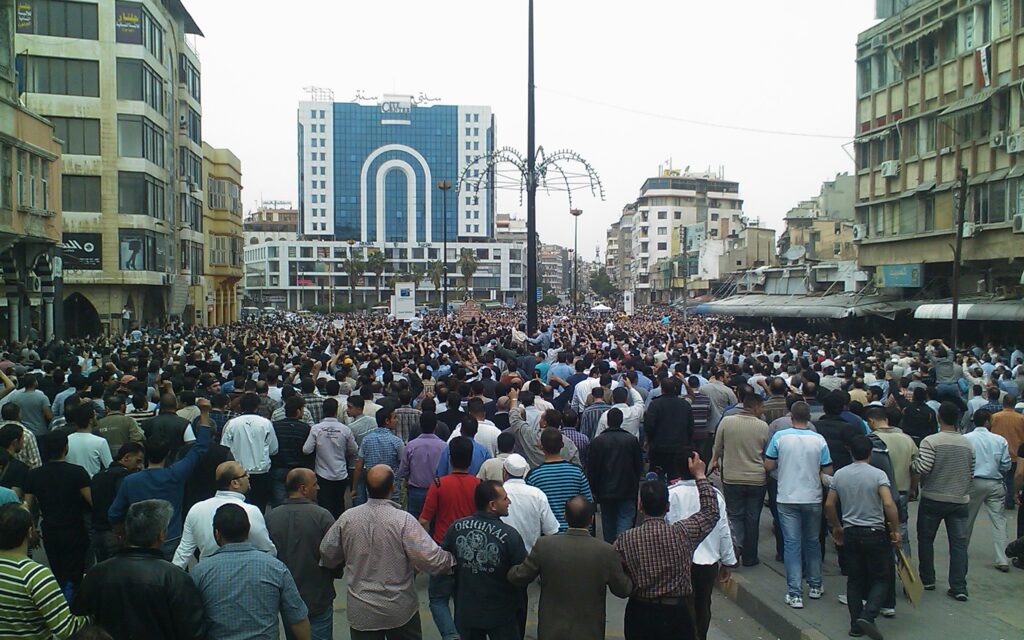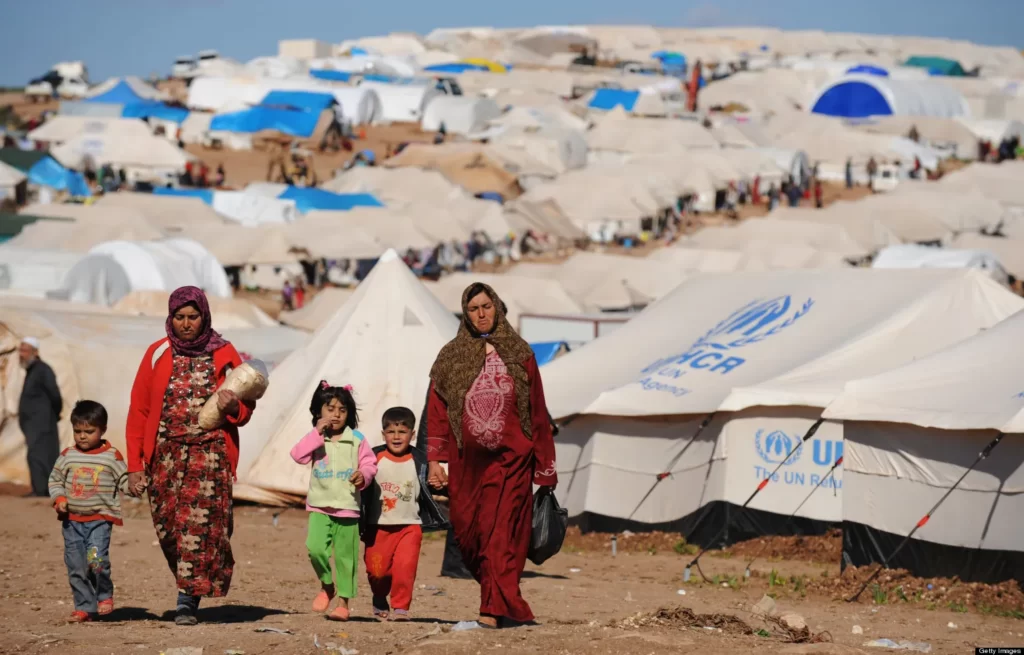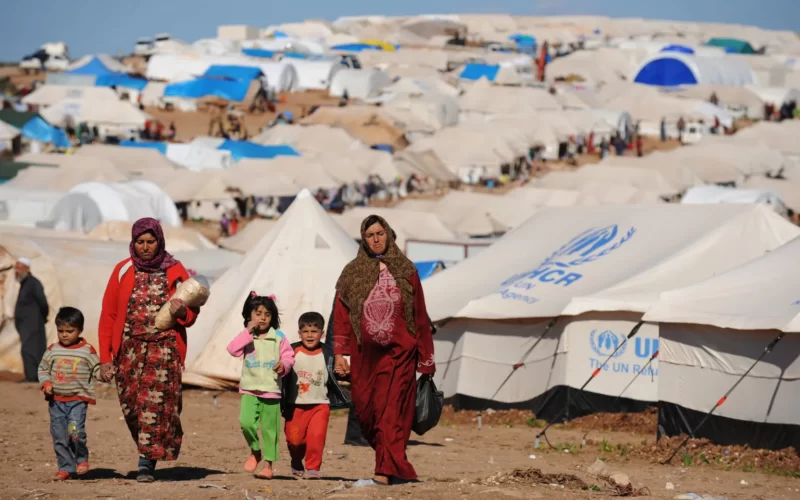The Syria Civil War is a currently ongoing crisis that includes many nations. The war caused great distress and significant destruction. The Ba’athist Syrian Arab Republic is opposing the Government of Syria with the aid of many external supporting allies. The problems are not just between these two parties but between many other foreign forces and nations. Around 6.2 million people fled the country by internal movements, and approximately 5.7 million people went abroad. Crossing over ten years of continuous conflict, this text provides a Syria Civil War summary and the future prospects of the Syria Civil War.
The Beginning & the Inner Conflicts (2011)

The initial reason for the protests in 2011 was the rise of Syrians against the dictators who were repressing the people in the regions of Tunisia, Egypt, which are the Eastern states. The Ba’athist Syrian Arab Republic leader, Bashar al-Assad, violently towards the Spring protestors. This created a wave of negligence for Assad, and he was considered irrational by the world nations, including the USA, EU, and some nations of the Arab country league. His decision to handle the protestors was by sheer force and suppression. A direct military interference was seen on the control of protests which intended the lack of mercy.
The environmental conditions were also not in favor of Syria, and that led to the great drought, which lasted between 2006 – 2010. The farming community was greatly affected, and this led to the mass migration of the rural masses to the urban cities in search of jobs. Daraa is a rural province in the southern region of Syria which was the beginning of one of the biggest protests during that time. The protests ignited and spread to Damascus, the capital city of Syria, and Aleppo, the most populous city of Syria.
Initial unrest was a demand to release the imprisoned teenagers who were accused of demeaning the President. An overall change and reformation of the political ideologies were insisted on by the protestors. But the response from the other side was mass shootings and mass arrests of protestors. The country was divided into a group of Islamic Sunni, Alawite, Kurds, Shias, Druzes, and Christians. The Assads belonged to the minority population of Alawites. The Islamic Sunni were often termed extremists by President Assad. By the mid-May of 2011, there arose a group of pro-Assad camps supporting Assad and the anti-Assad camps opposing him.
The Sunnis were fighting Assad while the Shias were fully supporting Assad and the Syrian government. The Free Syrian Army was formed with an aim to protect the protestors. Multiple rebel groups were formed against Assad, and the inconsistency led to a full-pledged Syria Civil War by January 2012.
Foreign allegiances and allies
The Syrian Government was supported by nations and groups like Russia, Iran, Iraq, Egypt, and Hezbullah. The countries that supported the rebel groups were the USA, Turkey, France, and Saudi Arabia. Russia has been an avid supporter of the nation since the 1950s. They provided Syria with ammunition and other required resources for the Syria Civil War.
Russia and China have also blocked various critical resolutions regarding President Assad and the over-dominant Syrian Government. Iran provided Syria with fighter planes, soldiers, and monetary support. Other Arab states like Saudi Arabia supported the Rebels to counter the support of Iran to Assad. By 2012, Hezbullah, a supporter of Iran, invades Syria to support Assad and the Syrian government. This made the gulf countries get more involved.
The militia support of these nations was often subjected to criticism stating them to destroy the country by boosting the internal problems and affairs. The prominent aspects and conflicts that are the driving forces of the Syria Civil War include the Government vs. the Syrian rebels, the adamant President, continual support from super-power nations in the Syria Civil War, and the heavily internalized hatred amongst the local communities.
The escalation of the crisis

The protests never stopped, and the people still accused Assad of claiming him as “The Oppressor.” Various measures of peacekeeping and ceasefires were initiated by the United Nations, but everything went in vain. The extremists were aiding the Rebel forces, but eventually, they started forming separate unions. The internal Syria Civil War became a hub for the extremists who indulged in the activities to help the rebels to overthrow the Presidential rule and Assad’s dominance.
Assad creates chaos by releasing prisoners to ignite the rebellion. By January 2012, al-Qaeda formed a new branch called Jabhat al-Nusra in Syria. Massacres, battles, attacks, unsuccessful ceasefires were the exact scenario in Syria. The children growing up in Syria started to get accustomed to the violent & horrific environment. The main problem was the lack of unity among the rebel groups due to diverse thoughts, varying religious beliefs, and lack of proper leadership.
The common point of all the rebels was the total hatred towards the President, Assad. The aid of the allied nations provided the resources for the rebels as well as the Syrian Government. But the backing support didn’t help stop the war but allowed in the ignition of the Syria Civil War. The rebels started targeting the civilian populations by executing them and killing them, stating that it was a revolution.
Syria Civil War became a worldwide discussion and an unresolved problem. The groups of rebels were scattered without a proper agenda, and the Syrian Government was on a whole spree of war. The internal conflicts in al-Qaeda result in the formation of ISIS (Islamic State of Iraq and Syria). The involvement of ISIS gained attention from the United States of America. The USA, an official participant of the war, targeted Assad as well as ISIS. The Turkish groups, who were against the Assad government, targeted the Kurdish groups. Even the allies didn’t have a common ground and propaganda.
By 2015, the Russian intervention greatly helped the Syria Civil War and the Syrian government to boom. In 2016, when Donald Trump became the US President, he claimed to be out of the Syria Civil War crisis. He withdrew troops stationed at Syria and signaled silence. Assad with the support of Russia and Iran claimed the city of Aleppo, which was a rebel city with resources. The USA reenters the situation by striking Syrian airbases with a sarin gas attack. By 2018 – 2019, many inter-rebellion wars arose, and many peacekeeping missions failed. Creating a buffer zone in the Northern part of Syria was successful. A demilitarized zone was created and was controlled by Russia and the Syrian government.
Current scenario

As of 2022, the Syrian economy was poorly affected, and the monetary value of I USD equals around 3500 Syrian pounds. The status of Assad’s government is entirely dependent on the foreign backer nations. Neighboring countries like Lebanon and Turkey are home to around 5 million Syrian refugees. Reports have stated the influence of Turkey, Russia, and the US in the fate of the war. The presidency of Biden and his decisions towards the Assad Regime will be the answer to the problem. The supremacy of Russia and the diplomacy of Turkey are vital factors to be considered. With the ongoing pandemic and other socio-economic factors, the fate of Syria is still a questionmark.

